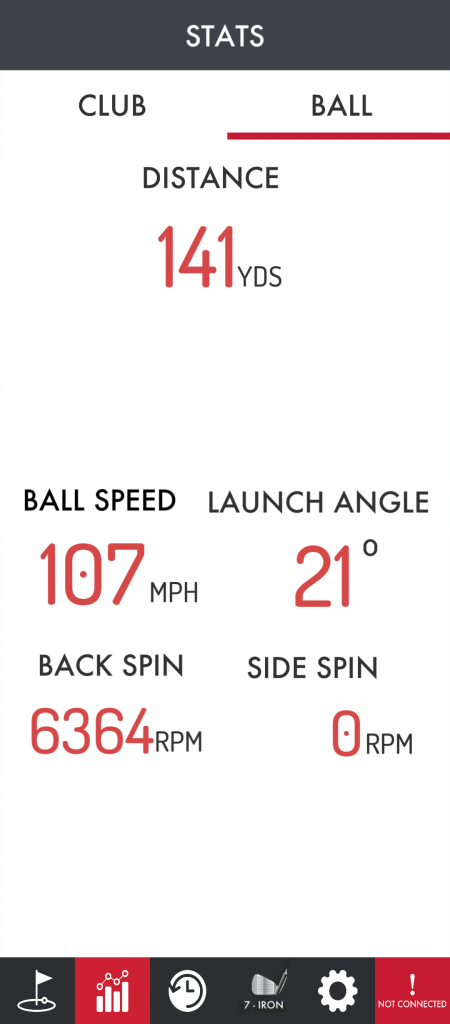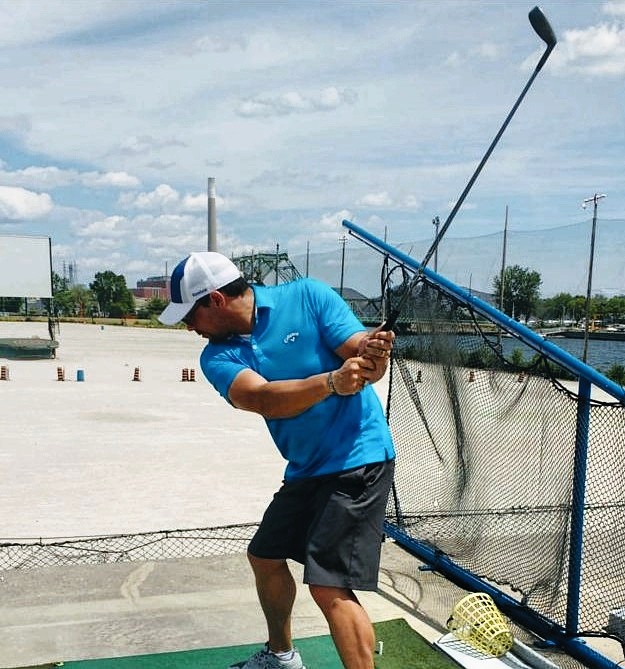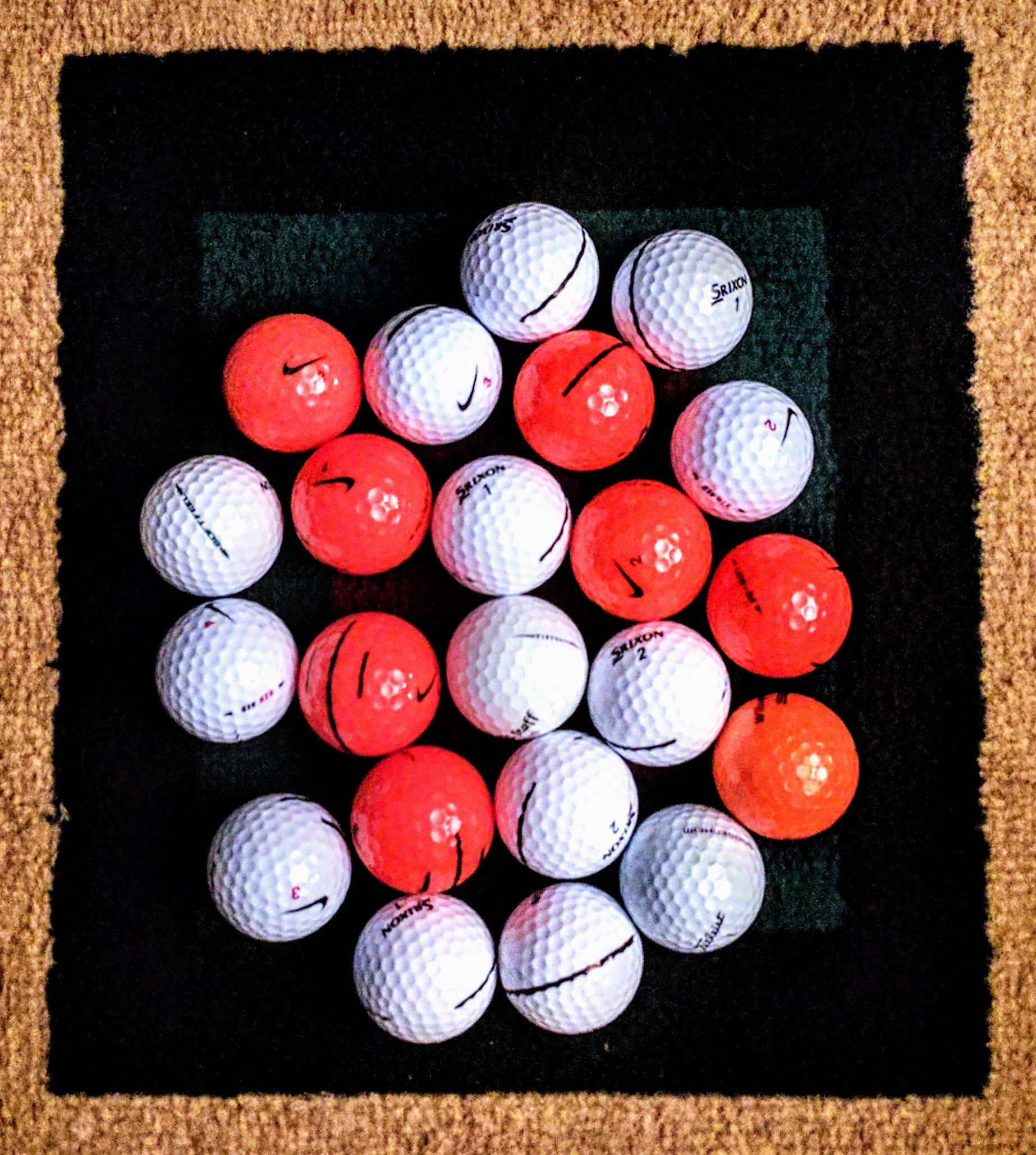Why Not?
(Cobe Life has recently switched to a new Subscription service. I strongly advise current Subscribers to resubmit their follow request)
I’m sure every golfer has gone through it. Maybe some of you like me are still going through it. What is it you ask? It’s the inability to have one swing work in a Simulator, at the Range, and on the course. Last Season I got in the habit of visiting the Range a couple days before playing a Round. If the weather turned bad I’d spend an hour in a Simulator. I’d get my swing dialed in. By the time my practice was done I’d leave the Range, or Simulator feeling totally confident. I was going to play the best Round of my life in a couple days. The course isn’t ready for what’s coming. My playing partners will be talking about this Round for the rest of the year. Never have I ever been this focused, ready, and confident. Two days later…
I shit the bed
I battle to make proper contact all day. When I don’t totally chunk it, I catch it thin. When I finally do make decent contact I slice the ball into oblivion. My distances are so inconsistent that club selection becomes a total gamble. Eventually I just choose the club that I happened to get a halfway decent shot with earlier. Long Par 5, think I’ll tee off with my 4 Hybrid because I hit it relatively straight two holes ago. 390 yards left to the hole, 4 Hybrid seems like a good choice. Only hit it 150 yards leaving 240. That’s OK the 4 Hybrid will work. Still 80 yards remaining. Normally that would be a smooth 52 degree Wedge. Unfortunately nothing I’ve hit has been smooth today so I’ll club up to a Pitching Wedge in case I chunk it. End up blading the ball into oblivion. Damn it! I should have just played a bump and run with the 4 Hybrid. Have you ever had those days? Sounds like an exaggeration but it isn’t. I have had those days. What could have happened to my swing between Thursday and Saturday?
Absolutely nothing!
The truth is that your swing didn’t suddenly disintegrate. It was as ready as you had imagined. You were ready to have the Round of your life. The problem wasn’t your swing. The problem was where you chose to use it. There are specific differences between each place you practice your swing. Some of these differences are extremely subtle, but can have a profound effect on your game. The first of which is barely noticeable to golf beginners. It wasn’t noticeable to me for a full two seasons. I struggled, and doubted myself every time I played. Wondering if I would ever be able to reproduce the success I was having at the Range on a course. One of the most important Golf Beginner tips I can give you is to always begin your setup by properly setting the…
Lie Angle
I used to believe that the key to Golf was to develop a smooth repeatable swing. I had the right idea, but I missed one necessary ingredient. Golf is a game of minor adjustments. One of the most important of those relates to lie angle. Something I failed to realize when I practiced my swing at the local range, was that the old hitting mats they provide have become significantly worn in the contact zone. So where the ball sits is slightly lower than the area around it. In order to make proper contact you would have to adjust the lie angle of your swing to be slightly toe up. Of course the Beginner Golfer isn’t actually aware that over the course of adjusting their swing ball after ball until they consistently make good contact. That swing is counterproductive to when they step on to a course and the ball is on even ground, or even worse a slight downhill lie. More often than not that’s how thin shots happen. It might sound like I’m suggesting that you stop going to the Range. I’m not. I’m telling you to be very aware of the lie angle of your club when you place it behind the ball at setup. The sole of your club needs to be as flat against the ground as possible. The lie angle determines how far you should be from the ball. I used to believe that my club choice determined that. It does if you take every shot from the exact same spot at the Range, or in a Simulator. On a course things become very different because the ground level is constantly changing. That brings me to the next factor that can cause fits…
Surface hardness
Something that never changes in a Simulator or hitting off a mat at the Range is the surface you are hitting off of. I actually have preferred Simulator Practice locations because the surface you hit off of has a softer underlayer that provides more give. If you are having trouble understanding my meaning. Imagine hitting your longest Iron off of a sidewalk. There’s a very good chance that the fear of contacting the concrete would have you end up blading the ball. Any swing that came in too steep would bounce so hard it would totally sap your strike of distance. A hitting surface with more give or depth to it allows you to come in steep or shallow, and still make decent contact. That felt much better to me. It feels far better to everyone that plays golf no matter what your skill level may be. Does it help you improve your swing though? Of course it does. All practice helps you improve. In this case though the firmer surface helps you even more. The reason for this is because of it’s affect on the proper utilization of each clubs lie Angle. The softer the surface, the more incorrect your lie angle can be, and still allow for decent contact. If the heel, or toe would hit first the surface gives way just enough to limit the affect on the swing. A rigid surface forces you to bring the club head perfectly square through the impact zone or suffer the consequences. Learn to make clean contact in a Simulator, or on a mat at the Range with a hard surface, and your swing will be pure. Sounds like that’s the ticket to improving your swing, and lowering your scores on the course then. I really wish it was. Course conditions can change from very hard surfaces to extremely soft. Especially when you live in Canada like I do. Practicing off of a hard surface can end up creating a swing that’s robotic. It becomes difficult to make those small adjustments that are required during a Round of Golf. What if you have to hit out of the Rough, or out of a bunker? What if the ball is above or below your feet? Once again the most important thing that you can focus on is the lie angle of the club.
Pre-shot Routine
Everyone should develop a pre-shot routine. It gets you prepared to make the shot, settles the nerves, and helps you properly set yourself. Everyone has their own unique way of doing it. Whatever yours is, make sure that it includes aligning the club’s lie angle so that it’s level with the surface you are hitting off of. If your routine doesn’t include this one crucial step yet? Then that could be why you have had those days on the course that made you wonder what happened to my swing?
FOLLOW ME ON TWITTER
http://twitter.com/cobeness
FOLLOW ME ON INSTAGRAM
http://instagram.com/cobesports
FOLLOW ME ON FACEBOOK
http://www.facebook.com/cobelifegolf









